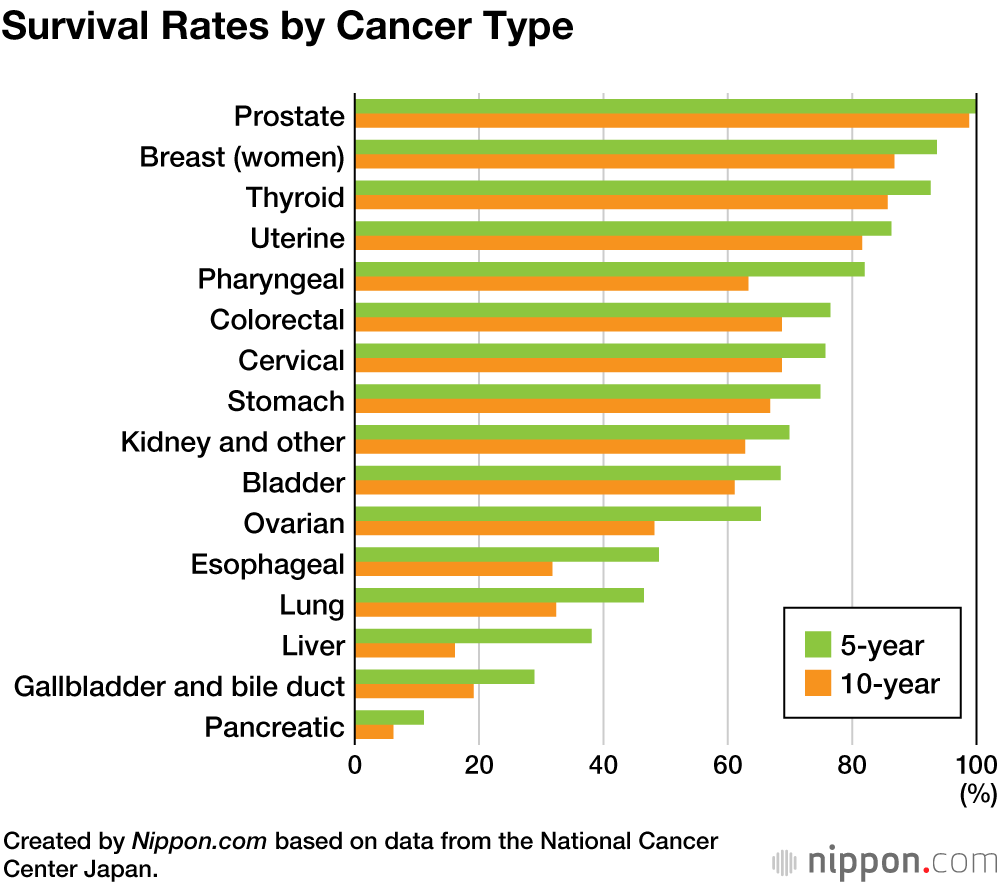
Japan’s 10-Year Cancer Survival Rate Rises to 58.3%
Health Economy Science- English
- 日本語
- 简体字
- 繁體字
- Français
- Español
- العربية
- Русский
The National Cancer Center Japan has announced that the 10-year survival rate for patients diagnosed with cancer between 2004 and 2007 was 58.3%. A study was conducted using the statistics of 94,000 cancer patients aged between 15 and 94 at 21 cancer medical facilities, where they had been diagnosed. Cases of death other than cancer were not included in the calculation of survival rates. This figure is a 1.1 percentage point increase compared to the survival rate during the previous study, based on cancer patients diagnosed from 2003 to 2006. This is the sixth time the National Cancer Center has announced the 10-year survival rate and it continues to improve due to advances in treatment, such as new medicine development.
A closer look at the 10-year survival rates by cancer type shows that prostate cancer had the highest rate with 98.8% and those for breast, thyroid, and uterine cancers were all above 80%. Those with a survival rate of less than 20% were gallbladder and bile duct with 19.1%, liver with 16.1%, and pancreatic with 6.2%.
Meanwhile, the 5-year survival rate, based on a study of 148,000 patients diagnosed with cancer between 2010 and 2012 at 32 facilities nationwide, stood at 68.6%. This was a 0.2-point rise from the previous study based on diagnoses given between 2009 and 2011. The survival rate for prostate cancer was 100% and for breast cancer it was 93.6%.
The 10-year survival rates by the stage at which the cancer was detected (stage 1 being the earliest of four) clearly show the importance of early detection and treatment. For stomach cancer, the 10-year survival rate at stage 4 is only 5.9%, but if detected at stage 1, the rate rises to 90.8%.
(Translated from Japanese. Banner photo © Pixta.)


